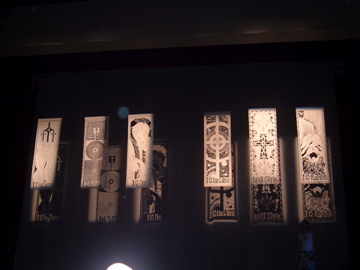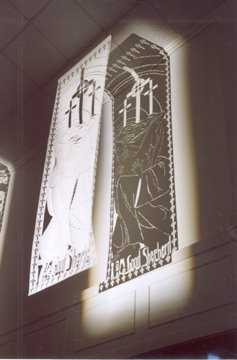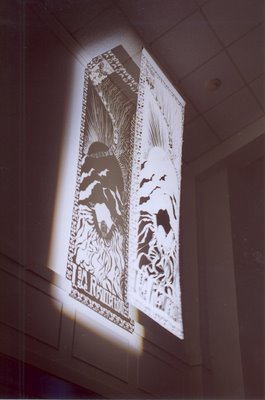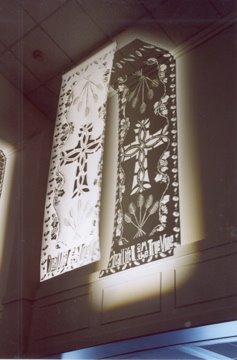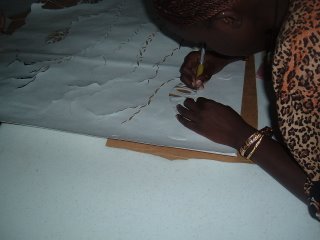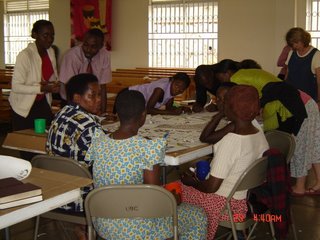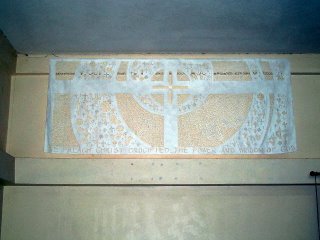

This is the banner we made in South Africa this summer. It was a gift for the family we stayed with, the Prices. The center of the circle was a cross with two connecting circles in it. These two circles represented Gary and Cheryl Price who are serving as Campus Crusade for Christ missionaries in Durban, South Africa. The center cross is surrounded by five circles representing their five sons. The foci of the circles are the four points of the cross and the center of the cross. The circles are a little off center, but then all our lives are a little off center! The radii of the circles are roughly the ages of the boys. I asked the boys to tell me their favorite Bible verses and they came up with.
Phillip—“In the beginning God”
Stephen—“I am the Way, the Truth, and the Life”
Tim—“If God is for us who can ever be against us”
Jason—“This light is the light for everyone”
Brian—“He must become greater and I must become less”
Phillip’s circle is illustrated with creation pictures. The circle begins with waves of the ocean, the sun, moon, and stars, bird, fish, elephant, cheetah, giraffe, lion, and ends with the footprint of a man. The foot print is actually a map of Africa with toes. It reminds us that we are all part of God’s creation. Stephen’s circle contains a winding path etched with the word “JESUS.” It is punctuated with African drums, guitars, and musical notation. It reminds us that Jesus is the way to life and that his gift of music can help to lead us along that path. Tim’s circle contains Zulu shields and spears and giraffe and zebra stripes. It reminds us that God is our protection and our shield. Brian’s circle (I got a little out of order here.) is filled with all kinds of crosses. These crosses were cut by many of the boys’ friends while we were at youth camp. It reminds us that Jesus’ example of sacrifice should guide our life and also that all the crosses we are called to bear are different and unique. Jason’s circle is a web of stars. It reminds us that Jesus is the light of our life, that we are connected, and that Jesus is the one that holds this world together.
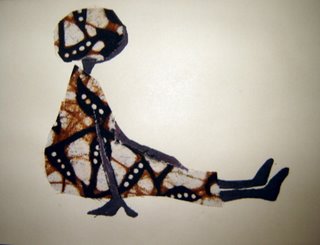

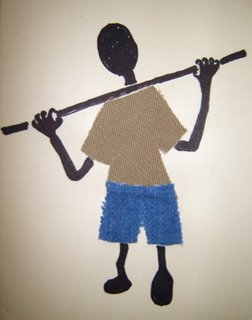
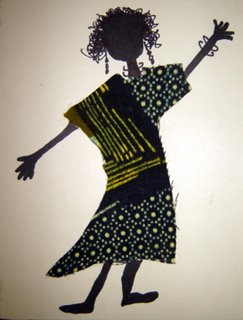
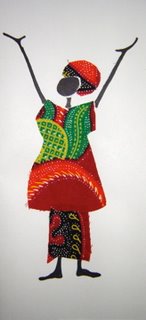
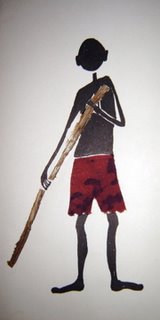
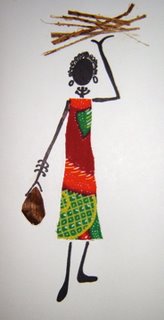
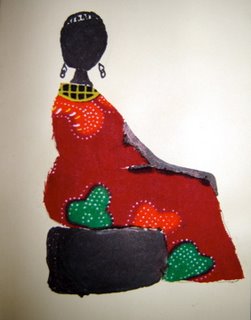
 I recently returned from a mission trip to Mbarara, Uganda. There were ten people on our team and our assignments were teaching pastors, university students, working women, visiting HIV/AIDS patients in the villages, prayerwalking, videomaking, and kitchen construction. My assignment was to help a group of HIV positive people get started in a cottage industry (or income generating scheme as they call it in Uganda)of making greeting cards. I gathered materials here in the U.S. and carried my 70lb. suitcase of cardmaking stuff to Uganda. I really didn't know what to expect. I met with a group of about 25 people for five days. Almost none of them spoke English. They spoke Runyankore. Through sign language and learning by doing, I showed them how to use the templates to make envelopes, use the paper cutter, trace the patterns, how to use a glue stick and permanent markers. And they taught me how to drink Chai, to love their spontaneous singing, to appreciate their industry, to marvel at the color and vibrancy of their fabrics, and to fall in love with each one of them. Here are some of the 200 cards they produced and a short video of them at work. Click here to see the video. Their group is called "Go and Make Disciples." They are a group of people living with HIV/AIDS in Mbarara, Uganda. They are finding hope in Jesus Christ and are committed to sharing that hope with others in their villages through peer education and support.
I recently returned from a mission trip to Mbarara, Uganda. There were ten people on our team and our assignments were teaching pastors, university students, working women, visiting HIV/AIDS patients in the villages, prayerwalking, videomaking, and kitchen construction. My assignment was to help a group of HIV positive people get started in a cottage industry (or income generating scheme as they call it in Uganda)of making greeting cards. I gathered materials here in the U.S. and carried my 70lb. suitcase of cardmaking stuff to Uganda. I really didn't know what to expect. I met with a group of about 25 people for five days. Almost none of them spoke English. They spoke Runyankore. Through sign language and learning by doing, I showed them how to use the templates to make envelopes, use the paper cutter, trace the patterns, how to use a glue stick and permanent markers. And they taught me how to drink Chai, to love their spontaneous singing, to appreciate their industry, to marvel at the color and vibrancy of their fabrics, and to fall in love with each one of them. Here are some of the 200 cards they produced and a short video of them at work. Click here to see the video. Their group is called "Go and Make Disciples." They are a group of people living with HIV/AIDS in Mbarara, Uganda. They are finding hope in Jesus Christ and are committed to sharing that hope with others in their villages through peer education and support.
